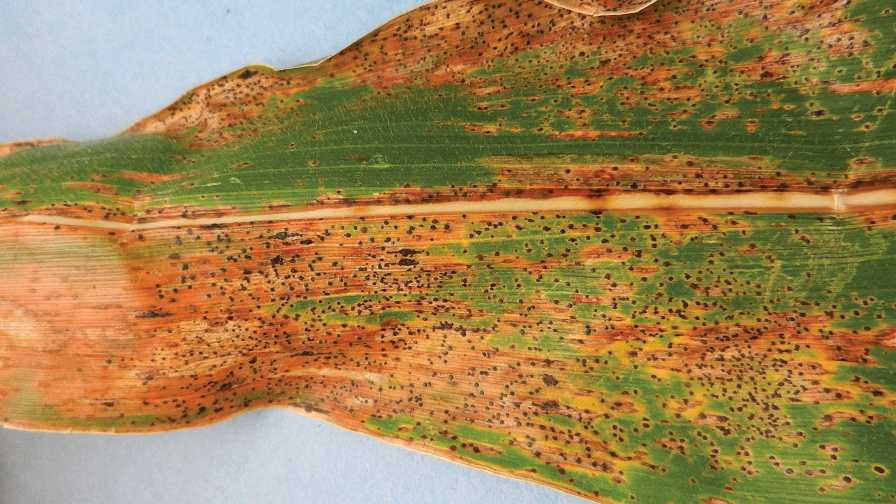Florida Sweet Corn Has New Deadly Stalker In Tar Spot

Photo by Kiersten Wise
Disease Specs
Tar spot disease of maize, caused by Phyllachora maydis Maubl, was detected in Florida in early June when a University of Florida researcher collected a leaf sample with symptoms from a South Florida corn field. Prior to this finding, P. maydis was first reported and confirmed in both Indiana and Illinois in September 2015.
The disease was previously only known to occur outside the U.S. in Mexico, Central and South America, and the West Indies.
Identification
Infections first appear on the lower leaves, usually 10 to 18 days before silking. Symptoms of tar spot include smooth oval to circular lesions, surrounded by chlorotic borders. Spots may enlarge with an initially water-soaked area becoming necrotic, to form circular-oval brown lesions with a dark outer edge, known as a “fish-eye” symptom.
Larger lesions coalesce after 7 to 14 days with areas between spots becoming dried out. The fungus spreads from the lowest leaves to upper leaves, and the husks of developing ears.
The disease has resulted in an estimated yield loss of up to 30% in Mexico, with an average loss of around 8%. Affected ears have reduced weight and loose kernels, and kernels at the ear tip may germinate prematurely.
Tar spot disease is usually only a minor problem, however a more severe form of tar spot complex occurs when there is a joint infection of P. maydis and Monographella maydis.
To date, M. maydis has not been reported in the U.S. The disease they cause occurs in the cooler and higher elevations of Mexico, Central and South America, and the West Indies, so their ability to spread over land through other climatic zones may be limited.
Survival And Spread
Natural dispersal is by windborne ascospores, which can move relatively long distances. Tar spot is not known to be seedborne, however it could be transported on fresh or dry maize leaves or husks or products made from them.
Other than corn, no other host is known. Ascospores of P. maydis may survive in crop debris for three months or longer.
Conditions conducive to disease development are high relative humidity, leaf wetness of at least seven hours at night, low-light intensity, high levels of nitrogen fertilizer, and two continuous crops of corn per year.
In Mexico, the disease is most severe in the cooler months from November to April and rainfall does not appear to be a significant factor in disease progress and severity.
Management Methods
Lower leaves should be examined for small, raised, glossy, dark, circular, or oval to irregular spots, or for brown lesions, often with a dark border, having a dark ascomata at the centers.
Where corn is grown continuously in the vicinity, efforts at sanitation are not likely to be effective.
There are currently no fungicides registered in the U.S. to prevent or manage tar spot.










